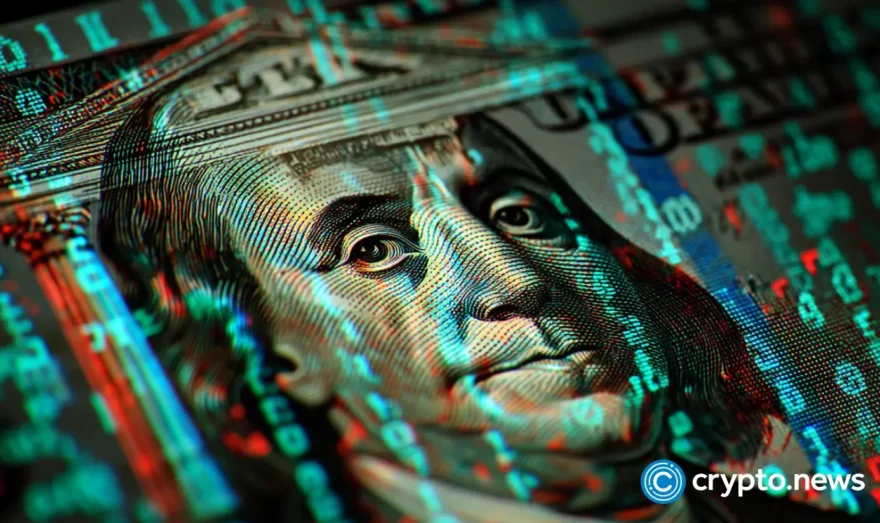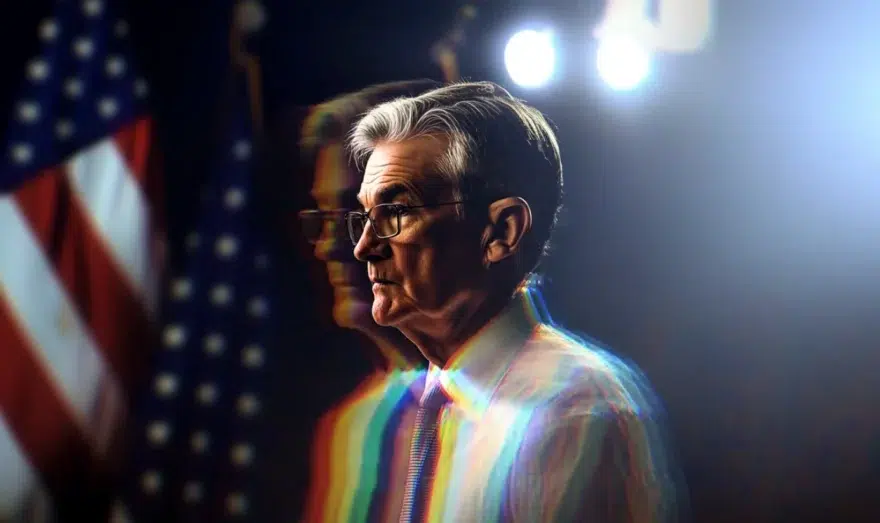Stablecoins can hold central banks fiscally accountable | Opinion

Disclosure: The views and opinions expressed here belong solely to the author and do not represent the views and opinions of crypto.news’ editorial.
Just last month, the United States proposed a Federal Bitcoin Reserve. Recently, the UAE Mubadala Sovereign Wealth Fund invested $436 million in Bitcoin (BTC), and connections to the world’s most dominant cryptocurrency are also found in Norway’s Government Pension Fund and a Singaporean Sovereign Wealth Fund, Temasek. It’s extremely clear that Bitcoin is rapidly gaining financial authority worldwide, and global cryptocurrency adoption is also on the rise, particularly in Asia, with India, Indonesia, and Nigeria being the top three countries leading crypto adoption in 2024.
Bitcoin, stablecoins, and other decentralized currencies represent a rejection of the traditional financial system. One that is plagued with slow transaction times, high transaction fees, and inflated native currencies; these challenges are not new, and they have underlined the necessity and early success of decentralized finance. But what we are on the brink of is a mass dearth of traditional (fiat) currencies. Central banks will soon no longer have monopolistic control of their native currency, and stablecoin wars will become the new currency wars.
‘To CBDC or not to CBDC?’
The debate over digital currency has reached a turning point. For years, governments have questioned, “To CBDC or not to CBDC?” In January, the US cast its vote. With Trump’s executive order banning the development of a US central bank digital currency and pushing forth stablecoins instead, the US has made it clear that it won’t be pursuing government-controlled digital money. But while the decision solidifies stablecoins as the US preferred path, the global stablecoin story is far from straightforward.
The reality is the US never needed a digital dollar. There is no objective benefit to a CBDC when the US dollar already dominates global finance. Governments and markets worldwide rely on the dollar to stabilize payments, facilitate cross-border transactions, and gain access to wealth. USD-backed stablecoins like Tether (USDT) and USD Coin (USDC) have already accomplished what a government-issued digital currency was meant to do. They provide a frictionless way for businesses and individuals to store value, transact internationally, and hedge against weak local currencies—all without requiring a centralized authority.
While the US has rejected a CBDC, other nations still grapple with their digital currency strategies. Many see digital currencies as a way to modernize their financial systems, either by upgrading their fiat for the digital age or tapping into the benefits of financial inclusion, security, and transparency. But digitization alone is not a solution. CBDCs offer governments unprecedented control over financial activity, undermining the very culture of financial freedom that blockchain technology was built to protect. Worse, they do not guarantee stability. In countries where inflation and currency devaluation are rampant, a CBDC does not fix the problem—it merely digitizes a broken system.
Back to the people
People are taking matters into their own hands; the decentralized nature of blockchain means consumers have financial alternatives beyond the reach of their country. And when governments restrict digital assets, black markets emerge. As countries impose capital controls, citizens look to circumvent them using stablecoins. And when central banks inflate their national currencies through reckless monetary policy, people start to replace their fiat currency with the borderless, frictionless, decentralized blockchain. It would only take 1%, 5%, or 10% of a country’s population to move their savings into digital assets like Bitcoin or USD-backed stablecoins before their local currency begins to destabilize. As that number grows over the next decade with blockchain adoption, monetary sovereignty can be lost.
This shift shows a path towards the end of the central banks’ monopoly over money. For centuries, governments dictated the currency their citizens used. That is no longer the case. If central banks do not take a more competitive approach—particularly regarding inflation, government spending, and taxation—their citizens will simply migrate to more stable alternatives, and be able to do so very quickly using blockchain-based peer-to-peer transactions. People are no longer bound by national borders when choosing where to store their wealth. They can opt seamlessly for digital dollars, bypassing geopolitical constraints such as currency controls, the BRICS economic influence, or even shifts in the petrodollar system.
These are the early stages of a massive monetary consolidation. Today, there are 180 fiat currencies, but history tells us that technology adoption happens in waves. We are already several years into the blockchain revolution. It may take five, ten, or twenty years, but eventually, most weak currencies will disappear. If central banks don’t stop their printing press, then the vast majority of the world’s fiat currencies will either merge, consolidate, or dollarize to stay competitive in a digital economy. Those that do not will simply fade into irrelevance.
And yes, while the US stands to gain the most, with the dollar being the primary fiat trading pair and the overwhelming majority of stablecoins pegged to USD, the impending mass extinction of global fiat currencies signals a significant warning to central banks who are reluctant to adapt.
Central banks’ survival
Central banks will need to embrace free-market competition if they want to remain relevant. The alternative is to be left behind by a financial system already moving on without them.
For central banks, adoption looks like collaboration with innovative and decentralized-thinking fintechs who understand the needs of the new era of global finance. It also looks like embracing cryptocurrencies like Bitcoin. And fundamentally, it looks like implementing stronger and faster compliance measures to keep up with the demand for faster transactions to and from global citizens and communities.
In the long run, even stablecoins may not be the final destination. As Bitcoin adoption increases and mining reaches full maturity, its volatility will decrease. A century from now, Bitcoin or another finite digital asset could become more stable than today’s stablecoins. With no inflation, no centralized control, and a fixed supply, Bitcoin could emerge as the dominant global currency. Understanding these principles and outlook, governments need to add Bitcoin and other digital assets to their strategic reserves. But those waiting for this point will lose their competitive edge and pay the price.
The next few months will test how governments and global markets react. Will we see a scramble for digital currency supremacy, with countries racing to issue their own stablecoin alternatives? Or will history repeat itself, with weaker currencies collapsing while the strongest ones consolidate power? One thing is certain—the stablecoin wars have begun, and there is no turning back. The world is on the brink of a financial revolution, and only those who adapt will survive.














